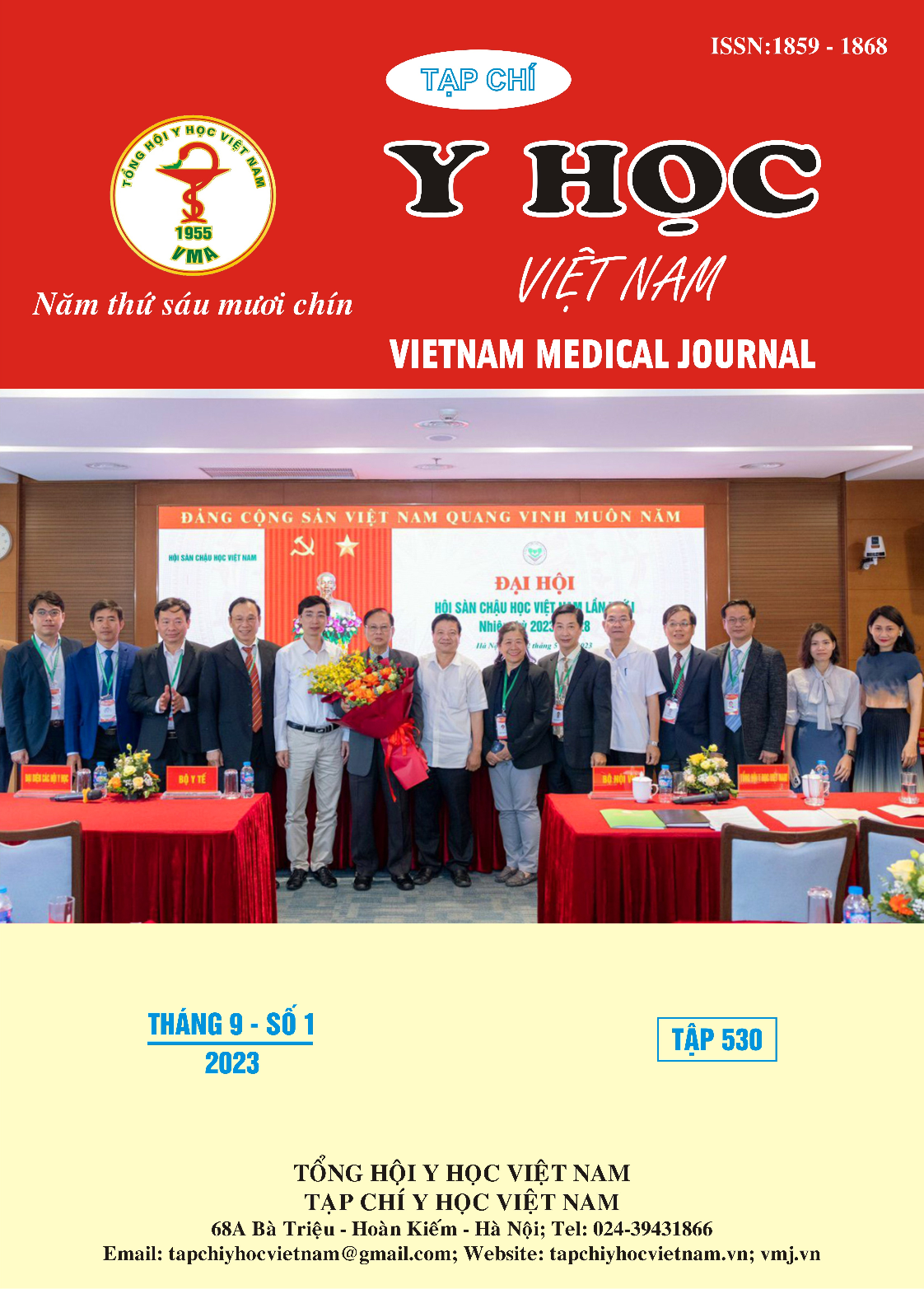CLINICAL CHARACTERISTICS AND IMAGING FEATURES OF SENSORINEURAL HEARING LOSS IN CHILDREN AT THE CHILDREN HOSPITAL NO.1 FROM 01/2022 TO 06/2023
Main Article Content
Abstract
Introduction: Congenital hearing loss leads to delayed language development, severely impacting learning ability and the development of social skills, which cause consequences on children's psychophysiology. Early detection and knowing clearly about clinical features are very important, especially for children with risk factors for hearing loss. Objectives: To determine the prevalence of factors associated with and imaging features of sensorineural hearing loss among children the Children Hospital No.1. Material and Methods: A prospective study. Results: From January 2022 to June 2023, 72 children with a diagnosis of sensorineural hearing loss at the Children Hospital No.1 were included in this study. The degree of hearing loss most severe-to-profound hearing loss (≥ 90 dB) was 51,4% as many as 46 children (63.9%) with asymmetrical hearing loss in most of the subjects. Most of the children with bilateral congenital sensorineural hearing loss (SNHL) are in the age > 5 years old (mean age: 5.8 years). Children with a history of neonatal resuscitation accounted for the highest rate 59% within factors of risk factors for hearing loss. Conclusion: There was a delay in the diagnosis of prelingual sensorineural hearing loss, with a high proportion of the severe-to-profound among children presenting with a diagnosis. Enhancement of knowledge and development of hearing screening programs for at-risk children towards a universal newborn hearing screening is urgently needed.
Article Details
Keywords
hearing loss, sensorineural hearing loss, children.
References
2. Culbertson SR, Dillon MT, Richter ME, et al. Younger Age at Cochlear Implant Activation Results in Improved Auditory Skill Development for Children With Congenital Deafness. Journal of speech, language, and hearing research: JSLHR. Sep 12 2022;65(9)
3. Phạm Đình Nguyên. Nghiên cứu khiếm thính không mắc phải ở trẻ em. 2018;
4. Lai Thu Hà. Một số đặc điểm dịch tễ học, yếu tố nguy cơ gây nghe kém tiếp nhận và hiệu quả can thiệp đeo máy trợ thính ở trẻ dưới 3 tuổi tại bệnh viện nhi trung ương. 2020;
5. Wiranadha IM, Hartayanti A. Characteristics of Congenital Sensorineural Hearing Loss in Children at ENT Outpatient Clinic Sanglah General Hospital Denpasar in 2017. Report. Biomedical and Pharmacology Journal. 2020/03 2020.
6. Nguyen Xuan Nam. Nghiên cứu thăm dò chức năng nghe, chẩn đoán hình ảnh và đánh giá kết quả thính lực của trẻ cấy điện cực ốc tai. Luận Án Tiến Sĩ, Đại Học Y Hà Nội. 2017;
7. Chin O, Dharsono F, Kuthubutheen J, Thompson A. Is CT necessary for imaging paediatric congenital sensorineural hearing loss? Cochlear implants international. Mar 2020;21(2):75-82.
8. JCIH. Year 2019 Position Statement: Principles and Guidelines for Early Hearing Detection and Intervention Programs. 2019;


